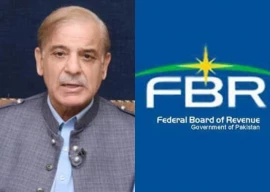
It was the same presentation that won Dr Anita Zaidi a standing ovation at the Tropical Society meeting in Philadelphia last month. But in Pakistan, at the auditorium of the Aga Khan University Hospital (AKUH) on Monday, she was met by silence, dejected expressions and sympathetic nods.
In 2011, Pakistan reported 189 polio cases, 45 higher than 144 in 2010. In Philadelphia, Zaidi was recognised for her insight into the issue that many international donors were unaware of.
But it seemed that the people here were apprehensive of the uphill battle that lies ahead of the nation that needs to tackle the polio virus.
On the other hand, India is about to reach the milestone of not reporting a single polio case in a whole year. What is worse, say experts, is that the future of the world’s largest public health effort, the Global Polio Eradication Initiative, launched in 1988, hinges almost entirely on Pakistan’s success in fighting this crippling disease.
“Pakistan is worst affected,” said Dr Zaidi, who is the chairperson and professor of Paediatrics and Child Health at AKUH. She was speaking on the second day of the seminar on “Paediatric infectious diseases: Insights from local research.” Zaidi said that Pakistan reported more cases than all the endemic countries combined. At the end of 2011, 16 countries were infected but only four (including India) have never reported a complete year without any polio cases. She said that around $7.86 billion were spent on eradicating polio in Pakistan but the situation still seems out of control. Although the amount seems huge, Zaidi was quick to put the number into perspective. “Around $20 billion is spent annually on air-conditioning in Iraq and Afghanistan!”
According to the child health expert, Pakistan has plenty of barriers. She talked about the ten most important ones based on her field experience and research.
They include: The unstable political, social, financial and law and order situation in Pakistan. “This takes away the leadership’s attention away from core public issues such as health,” Zaidi said. The polio drives are frequently disrupted when the lady health workers go on strike in the middle or right before the campaign. Also, to add insult to injury was the news about the fake polio campaign by the CIA.
Another issue which hampers the effectiveness of polio drives is the lack of communication with certain communities, especially the Pakhtun. Zaidi said that the risk of Pakhtun children contracting polio is five times higher than that of children from other backgrounds.
Almost 70 per cent of the polio cases in 2011 were in Pakhtun children.
But the fact that came as a big shock to the experts was that around 24 per cent of children who were reported to have polio till November 2011 were those who had been given the vaccine seven or more times.
The percentage of children who were not vaccinated and contracted polio was 32 per cent. This particular information deserved more research, said the chief of the Division of Women and Child Health at AKUH, Dr Zulfiqar Ali Bhutta. According to him, malnutrition, a Vitamin A deficiency and diarrhoea in children, could be the reasons why the vaccines were ineffective. “It is twice as likely that the polio vaccine does not convert in malnourished children,” Bhutta said.
The children who are Vitamin A deficient are also at a higher risk of contracting polio even after repeated immunisations. He recommended engaging the private sector, focusing more on routine immunisation and eradicating malnutrition and Vitamin A deficiencies. He also said that more information should be collected about the issue to help policy makers make better decisions and also make it accessible for the public.
Sindh Health Minister Dr Sagheer Ahmed was also present at the seminar. He has been actively involved in the polio campaigns. He said that the fact that so many polio cases are reported despite high coverage rates should be pondered upon. He also gave another reason for the ineffectiveness of the campaigns. “Every time a case is reported, there is brouhaha and one or two people end up being suspended which kills the momentum,” he said. “The core issues, such as malnourishment are not addressed and thus, the problem is not resolved.”
The minister urged the people not to set any deadlines but to come up with comprehensive and sustainable strategies to fight polio. Dr Bhutta announced that such a strategy was already being worked upon and would be presented before the health department by the middle of 2012.
(Read: Polio on the march)
Published in The Express Tribune, January 11th, 2012.
COMMENTS (3)
Comments are moderated and generally will be posted if they are on-topic and not abusive.
For more information, please see our Comments FAQ
























1714129906-0/Clint-Eastwood-(1)1714129906-0-270x192.webp)











Polio is not only a problem in publich health alone. It has an impact on socio-economic development. Poor, hard to reach, remote and unsecure areas children are very vunerable to contact with Polio virus. It will need lot of effort and wills from different partners in health, education, military and private sectors to work closely together. Together, we can win".
Citing (edited) from The Origin of the 42-Year Stonewall of Vitamin C, by Robert Landwehr
In the late spring of 1949 the US was in the grip of its worst poliomyelitis epidemic ever. On June 10 a paper on ways to save the lives of bulbar polio victims was read at the Annual Session of the American Medical Association. Following the talk members of the audience were invited to comment. The first speaker, a leading authority from Pasadena, focused on details of tracheotomy techniques caused when paralyzed breathing, swallowing and coughing muscles of victims threatened their lives. Why the next person was recognized is puzzling. The only national recognition he had received — and it was obviously very limited — was that his picture appeared in Ebony in 1947 for having delivered of a deaf-mute black woman the first known surviving, identical quadruplets in the country. Here is the abstract of his remarks as recorded in JAMA:
“Dr. F. R. Klenner, Reidsville, N.C.: It might be interesting to learn how poliomyelitis was treated in Reidsville, N.C., during the 1948 epidemic. In the past seven years, virus infections have been treated and cured in a period of seventy-two hours by the employment of massive frequent injections of ascorbic acid, or vitamin C. I believe that if vitamin C in these massive doses — 6,000 to 20,000 mg in a twenty-four hour period — is given to these patients with poliomyelitis none will be paralyzed and there will be no further maiming or epidemics of poliomyelitis.”
The discussion period was, of course, to be devoted to hearing relevant comments of the world’s leading authorities on the treatment of bulbar polio symptoms, not to airing another claim of a cure. One can imagine the silence that must have greeted this sweeping, out-of-place declaration by a small-town general practitioner. Four other speakers, three more bulbar experts and an anesthesiologist, followed. None referred to Dr. Klenner’s remarks. (end of cite)
Dr. Klenner published 28 papers in respected medical journals about ways of using intravenous ascorbate (vitamin C) in successfull treatment of various diseases, including tetanus, diphtheria, snake bites, barbiturate poisoning, viral hepatitis A, polio, measles and others. He presented both methodology, case histories and logic behind. None of these protocols was ever accepted by mainstream medicine. Nobody dared to do the large-scale clinical tests for cheap, non-patentable, safe vitamin C. And yet the mainstream, 60 years later, still claims that there is no cure for them.
learned something interesting from my Russian neighbor. Her son plays with an Indian boy, whose mother is rarely see in our gated community. I learned from her it is because she had polio when she was young ad it affected her legs, so she cannot walk properly. Then she told me her husband had polio when he was young and it affected his arm. But you cannot tell he had it because he exercised a lot to give his arm strength. The Indian lady told her that they never told her you could strengthen your limbs through exercise.